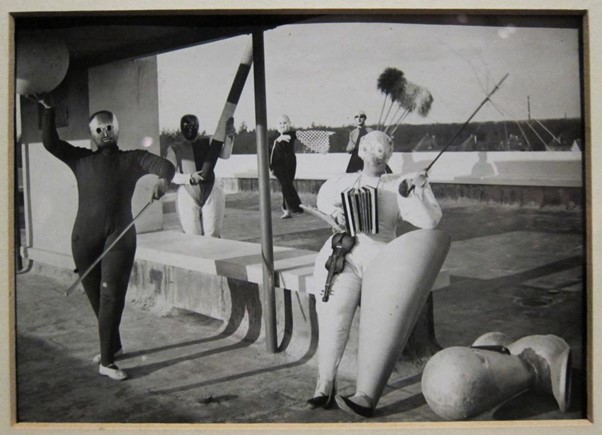
Artistic Practice 2
Anousheh Kehar, Philipp Sattler, Milica Tomić
The Bauhaus was a school of design, architecture, and applied arts that shaped the aesthetics of the 20th and 21st centuries. Its history, focused on genius male figures, has been recounted and taught relentlessly. These histories and practices overshadow and suppress a much broader, utopian and diverse reality that made the Bauhaus a revolutionary project. For this semester Artistic Practice students will explore these hidden histories that foreground the practices of women, queer and gender fluid identities and radical politics that, as art historian Elizabeth Otto frames it, “haunt the school’s historiography to the same measure that their activities complicate the standard narrative.” This haunting becomes more visible in a tradition that brought all departments and their students together and is the starting point of this semester’s focus – the Bauhaus Parties, the “Bauhausfeste”. In their zenith, they were elaborate festivals based on diverse concepts that created spaces, objects, spatial interventions, costumes, and performances among other artworks showcased on these occasions. Oskar Schlemmer, the master of the theatre workshop led these parties, during his time at the Bauhaus, under the credo: “Tell me how you party, and I tell you who you are”. This question sets the stage for this semester’s Artistic Practice. Developed as a research and practice-based semester students will work on research dossiers that manifest in a diverse range of objects and mediums. Students will look into these and other marginalised histories and connect them to artistic positions the student will develop in groups throughout the semester.
Image credit: https://thecharnelhouse.org/2013/06/02/oskar-schlemmers-bauhaus-costume-parties-1924-1926/#jp-carousel-9779